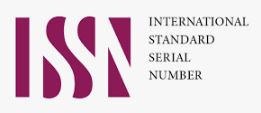PENINGKATAN USAHA PENGEPUL BARANG BEKAS DI KOTA SURABAYA
DOI:
https://doi.org/10.30996/jpm17.v2i01.1037Abstract
The volume of waste and limited land to disposal accompanied and high
population growth, where this statement also by the technical waste
management still conventional. Waste management urban especially in
residential areas until now generally is done through the stage of activity as
follows, namely: packing the garbage, collecting garbage from the houses to
LPS (disposal depot), transferring garbage directly to LPA (Final Disposal
Site) or from LPS ( Temporary Disposal Site) to LPA, until the waste is
disposed in LPA. Shortly, garbage from urban area contains 10 % (weight)
material that can be recycled ( paper, iron, cans, etc ), 50 % of them is organic
matter and 40 % of residue. Then, 60 % ( weight) dump can be recycled: 10 %
can be reused, and 50 % can be composited ( anonymous, 1992 ). The data
from Surabaya’s Sanitary Agency mentions that the total of daily volume of
garbage in Surabaya is 79,19 % that all of them form the household. Integrated
waste management systems need to combine reduction the waste, recycling &
reusing, compositing, the incinerating and final disposal. Reduction source of
garbage for industry need zero-waste technology and simple/minimal packing
products that has environmentally friendly. While, the habitual of wasteful
should be left for the households .Then, the approach recycling and reusing
applied particularly to the non-organic like paper, plastic, aluminum, glass,
metal and others. A lack of awareness of waste and the level of public
consumption and other activities make the waste kept piled up in the final
disposal site ( LPA) . Waste commonly found in the landfill among other bottles
beverages , detergents , and plastic bags .The waste the less attractive makes us
reluctant to see an even a glance at. In fact if we want to try, the waste can
become business opportunities. Even if we want to manage it properly, this
business could be the power source. Most cans is made of aluminum through a
process that require a lot of energy. Garbage cans recyclable with melt and
made aluminum as a starter new products .Thus, can additional energy sources,
pollution can be reduced , and resources bauxite , lime and sodium carbonate
as a starter aluminum can be efficient.
Keywords: waste, recycling , flat, and incomes.
Downloads
References
Aaron Deutchman, (1975)“Machine Design, Theory and Praticeâ€, New York Macmillien
Publishery, New York.
Azwar, Azrul, (1995), Pengantar Ilmu Kesehatan Lingkungan, PT. Mutiara Sumber Widya.
Jakarta.
Chandra, Budiman. (2006). Pengantar Kesehatan Lingkungan. EGC. Jakarta
Elbert,RJ and Griffin,RW. (2005), Business Essential, upper saddle river,eight edition,
N.J.Prentice Hall
Griffin,Ebert, (2008) Bisnis, edisi 8 , jilid 2,penerbit Erlangga.
Hermawan, Yoni. (2007), Hubungan antara Tingkat Pendidikan dan Persepsi dengan Perilaku
Ibu Rumah Tangga dalam Pemeliharaan Kebersihan Lingkungan.
Joseph. E. Shigley, Ir. Gandhi Harahap, (1994) “Perencanaan Tekhnik Mesinâ€, Edisi ke 4 Jilid
, PT. Erlangga.
Kottler Phillips, (2010), Manajemen Pemasaran, edisi 13, jilid 2 penerbit Erlangga.
Notoatmojo S, (2003) Ilmu kesehatan masyarakat prinsip-prinsip dasar, penerbit PT. Rineka
Cipta, Jakarta
Slamet, Juli Sumirat, (2002). Kesehatan Lingkungan. Gadjah Mada Univercity Press.
Yogyakarta
Sudarso, (1985), Pembuangan sampah, proyek pengembangan pendidikan tenaga sanitasi
pusat-pusat pendidikan tenaga kesehatan, Departemen Kesehatan.
Sularso, Kiyokatsu Suga, (2008) “Dasar Perencanaan dan Pemilihan Elemen Mesinâ€, cetakan
ke 12, PT. Pradnya Paramita, Jakarta.
Peningkatan Usaha Pengepul Barang Bekas Di Kota Surabaya
Downloads
Published
Issue
Section
License
COPYRIGHT NOTICE
The copyright in this website and the material on this website (including without limitation the text, computer code, artwork, photographs, images, music, audio material, video material and audio-visual material on this website) is owned by PM17: Jurnal Pengabdian Masyarakat and its licensors.
Copyright license
JPM17: Jurnal Pengabdian Masyarakat grants to you a worldwide non-exclusive royalty-free revocable license to:
- View this website and the material on this website on a computer or mobile device via a web browser;
- Copy and store this website and the material on this website in your web browser cache memory; and
- Print pages from this website for your
- All articles published by PM17: Jurnal Pengabdian Masyarakat are licensed under the creative commons attribution 4.0 international license. This permits anyone to copy, redistribute, remix, transmit and adapt the work provided the original work and source is appropriately cited.
JPM17: Jurnal Pengabdian Masyarakat does not grant you any other rights in relation to this website or the material on this website. In other words, all other rights are reserved.
For the avoidance of doubt, you must not adapt, edit, change, transform, publish, republish, distribute, redistribute, broadcast, rebroadcast or show or play in public this website or the material on this website (in any form or media) without appropriately and conspicuously citing the original work and source or JPM17: Jurnal Pengabdian Masyarakat prior written permission.
Permissions
You may request permission to use the copyright materials on this website by writing to compliance@academicjournals.org.
Enforcement of copyright
JPM17: Jurnal Pengabdian Masyarakat takes the protection of its copyright very seriously.
If JPM17: Jurnal Pengabdian Masyarakat discovers that you have used its copyright materials in contravention of the license above, JPM17: Jurnal Pengabdian Masyarakat may bring legal proceedings against you seeking monetary damages and an injunction to stop you using those materials. You could also be ordered to pay legal costs.
If you become aware of any use of ACADEMIC JOURNALS' copyright materials that contravenes or may contravene the license above, please report this by email to compliance@academicjournals.org.
Infringing material
If you become aware of any material on the website that you believe infringes your or any other person's copyright, please report this by email to jpm17@untag-sby.ac.id
target="_blank"














